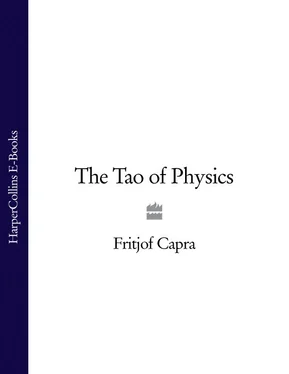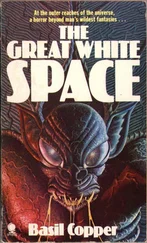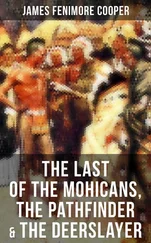1 ...8 9 10 12 13 14 ...19 We were parted many thousands of kalpas ago, yet we have not been separated even for a moment. We are facing each other all day long, yet we have never met. 4
Zen Buddhists have a particular knack for making a virtue out of the inconsistencies arising from verbal communication, and with the koan system they have developed a unique way of transmitting their teachings completely non-verbally. Koans are carefully devised nonsensical riddles which are meant to make the student of Zen realize the limitations of logic and reasoning in the most dramatic way. The irrational wording and paradoxical content of these riddles makes it impossible to solve them by thinking. They are designed precisely to stop the thought process and thus to make the student ready for the non-verbal experience of reality. The contemporary Zen master Yasutani introduced a Western student to one of the most famous koans with the following words:
One of the best koans , because the simplest, is Mu. This is its background: A monk came to Joshu, a renowned Zen master in China hundreds of years ago, and asked: ‘Has a dog Buddha-nature or not?’ Joshu retorted, ‘ Mu! ’ Literally, the expression means ‘no’ or ‘not’, but the significance of Joshu’s answer does not lie in this. Mo is the expression of the living, functioning, dynamic Buddha-nature. What you must do is discover the spirit or essence of this Mu, not through intellectual analysis but by search into your innermost being. Then you must demonstrate before me, concretely and vividly, that you understand Mu as living truth, without recourse to conceptions, theories, or abstract explanations. Remember, you can’t understand Mu through ordinary cognition, you must grasp it directly with your whole being. 5
To a beginner, the Zen master will normally present either this Mu-koan or one of the following two:
‘What was your original face—the one you had before your parents gave birth to you?’
‘You can make the sound of two hands clapping. Now what is the sound of one hand?’
All these koans have more or less unique solutions which a competent master recognizes immediately. Once the solution is found, the koan ceases to be paradoxical and becomes a profoundly meaningful statement made from the state of consciousness which it has helped to awaken.
In the Rinzai school, the student has to solve a long series of koans , each of them dealing with a particular aspect of Zen. This is the only way this school transmits its teachings. It does not use any positive statements, but leaves it entirely to the student to grasp the truth through the koans.
Here we find a striking parallel to the paradoxical situations which confronted physicists at the beginning of atomic physics. As in Zen, the truth was hidden in paradoxes that could not be solved by logical reasoning, but had to be understood in the terms of a new awareness; the awareness of the atomic reality. The teacher here was, of course, nature, who, like the Zen masters, does not provide any statements. She just provides the riddles.
The solving of a koan demands a supreme effort of concentration and involvement from the student. In books about Zen we read that the koan grips the student’s heart and mind and creates a true mental impasse, a state of sustained tension in which the whole world becomes an enormous mass of doubt and questioning. The founders of quantum theory experienced exactly the same situation, described here most vividly by Heisenberg:
I remember discussions with Bohr which went through many hours till very late at night and ended almost in despair; and when at the end of the discussion I went alone for a walk in the neighbouring park I repeated to myself again and again the question: Can nature possibly be so absurd as it seemed to us in these atomic experiments? 6
Whenever the essential nature of things is analysed by the intellect, it must seem absurd or paradoxical. This has always been recognized by the mystics, but has become a problem in science only very recently. For centuries, scientists were searching for the ‘fundamental laws of nature’ underlying the great variety of natural phenomena. These phenomena belonged to the scientists’ macroscopic environment and thus to the realm of their sensory experience. Since the images and intellectual concepts of their language were abstracted from this very experience, they were sufficient and adequate to describe the natural phenomena.
Questions about the essential nature of things were answered in classical physics by the Newtonian mechanistic model of the universe which, much in the same way as the Democritean model in ancient Greece, reduced all phenomena to the motions and interactions of hard indestructible atoms. The properties of these atoms were abstracted from the macroscopic notion of billiard balls, and thus from sensory experience. Whether this notion could actually be applied to the world of atoms was not questioned. Indeed, it could not be investigated experimentally.
In the twentieth century, however, physicists were able to tackle the question about the ultimate nature of matter experimentally. With the help of a most sophisticated technology they were able to probe deeper and deeper into nature, uncovering one layer of matter after the other in search for its ultimate ‘building blocks’. Thus the existence of atoms was verified, then their constituents were discovered—the nuclei and electrons—and finally the components of the nucleus—the protons and neutrons—and many other subatomic particles.
The delicate and complicated instruments of modern experimental physics penetrate deep into the submicroscopic world, into realms of nature far removed from our macroscopic environment, and make this world accessible to our senses. However, they can do so only through a chain of processes ending, for example, in the audible click of a Geiger counter, or in a dark spot on a photographic plate. What we see, or hear, are never the investigated phenomena themselves but always their consequences. The atomic and subatomic world itself lies beyond our sensory perception.
It is, then, with the help of modern instrumentation that we are able to ‘observe’ the properties of atoms and their constituents in an indirect way, and thus to ‘experience’ the subatomic world to some extent. This experience, however, is not an ordinary one, comparable to that of our daily environment. The knowledge about matter at this level is no longer derived from direct sensory experience, and therefore our ordinary language, which takes its images from the world of the senses, is no longer adequate to describe the observed phenomena. As we penetrate deeper and deeper into nature, we have to abandon more and more of the images and concepts of ordinary language.
On this journey to the world of the infinitely small, the most important step, from a philosophical point of view, was the first one: the step into the world of atoms. Probing inside the atom and investigating its structure, science transcended the limits of our sensory imagination. From this point on, it could no longer rely with absolute certainty on logic and common sense. Atomic physics provided the scientists with the first glimpses of the essential nature of things. Like the mystics, physicists were now dealing with a nonsensory experience of reality and, like the mystics, they had to face the paradoxical aspects of this experience. From then on therefore, the models and images of modern physics became akin to those of Eastern philosophy.
Chapter 4 The New Physics
According to the Eastern mystics, the direct mystical experience of reality is a momentous event which shakes the very foundations of one’s world view. D. T. Suzuki has called it ‘the most startling event that could ever happen in the realm of human consciousness … upsetting every form of standardised experience’, 1 and he has illustrated the shocking character of this experience with the words of a Zen master who described it as ‘the bottom of a pail breaking through’.
Читать дальше












